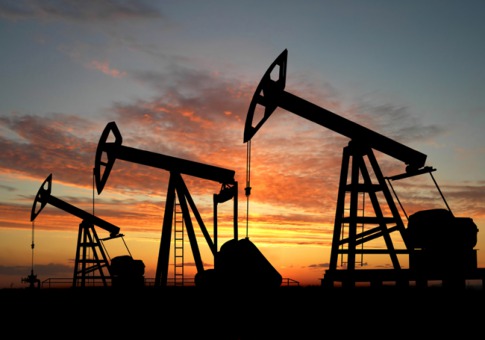 Brent crude dropped to its lowest level in more than a decade on Monday, surpassing lows reached in the depths of the financial crisis, hit hard by a relentless rise in global production that looks set to swamp the market again in 2016.
Brent crude dropped to its lowest level in more than a decade on Monday, surpassing lows reached in the depths of the financial crisis, hit hard by a relentless rise in global production that looks set to swamp the market again in 2016.
Even though demand has been robust this year crude inventories have continued to rise at more than 1m barrels a day, with storage tanks filling quickly and long lines of ships forming at key ports around the world.
Oil stocks in the developed world have ballooned to almost 3bn barrels — or more than a month of global oil supplies, according to the International Energy Agency.
They are expected to keep rising in 2016 with higher exports expected from Iran, once Opec’s second-largest producer, when sanctions linked to its nuclear programme are lifted. At the same time demand growth is likely to slow from this year’s fevered pace.
“The hope for a rebalancing in 2016 continues to suffer serious setbacks,” said Adam Longson, analyst at Morgan Stanley.
Brent, the international oil marker, fell by as much as 2 per cent to $36.04 per barrel on Monday, its weakest since 2004 and below the financial crisis low of $36.20 reached on December 24 2008. It settled at $36.35, down 1.4 per cent.
On the other side of the Atlantic, West Texas Intermediate, the US oil benchmark, settled up one penny at $34.74 a barrel, still more than $2 above its 2008 intraday low.
The number of put options giving holders the right to sell WTI crude below $30 a barrel by June has risen by almost half this month to the equivalent of 12m barrels. Traders also hold about 4m barrels equivalent of puts to sell WTI below $20 by June.
On Tuesday in Asia oil prices ticked higher after a pledge by Chinese economic planners of more “proactive” and “flexible” growth policies, with Brent adding 0.2 per cent to $36.43 a barrel and WTI climbing 3.8 per cent to $36.06.
But oil prices have dropped more than 15 per cent since a rancorous Opec meeting earlier this month that exposed the organisation’s inability to tackle a global oil glut, which is growing by as much as 2m barrels a day, according to some estimates.
Saudi Arabia and Iran both resisted calls for production restraint and vowed to keep pumping, intensifying a battle for market share that has contributed to record oil inventories and a halving of the oil price over the past 18 months.
“The last two weeks have seen an increasing number of reports indicating that Iran could receive sanctions relief as soon as January or February, at which point it will be free to increase its production and exports,” said Michael Wittner, analyst at Société Générale.
“It now appears possible, and perhaps probable, that Iran may meet its obligations in the first half of January.”
A strengthening US dollar and a deal to lift the tight restrictions on US crude oil exports, which have been in place for 40 years, have also weighed on prices. An unusually mild start to the winter in the northern hemisphere, partly because of the El Niño weather phenomenon, has been another factor.
“The pressure on prices is relentless, last week coming from . . . dollar strength and a much bigger than expected weekly build of nearly 5m barrels in US crude inventories,” said David Hufton of PVM, an oil brokerage.
“The Russian energy minister dismissed Opec as not worth co-operating with and the Venezuelan oil minister talked of a ‘catastrophe’ when storage capacity overflows in the first quarter after Iran returns.”
Oil prices have fallen almost 70 per cent since a June 2014 peak of $115 a barrel than halved in 18 months, shredding the budgets of Opec producers such as Venezuela, Nigeria and Angola.
Even the cartel’s wealthy Gulf members are starting to feel the pain with Saudi Arabia, the United Arab Emirates and Kuwait all raising interest rates last week to protect their currencies.
While there is evidence that the Saudi strategy is starting to work, with non-Opec supply expected to fall 600,000 b/d next year — the first decline in years — many traders believe the market will remain heavily oversupplied next year.
In a letter to his clients, hedge fund manager Pierre Andurand said oil stocks could increase by 1.6m barrels in the first half of next year.
“Such large builds could lead to a test of maximum storage capacity,” he said.” This should result in significantly lower crude prices.”
FINANCIAL TIMES
Leave a Reply
You must be logged in to post a comment.